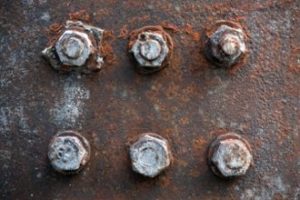 Corrosion is the cancer of fasteners. It can not only harm their appearance but it can lead to their total failure. And if your fasteners fail to do their job, the application they are in won’t be structurally sound, which can lead to bigger issues, like safety risks and additional costs.
Corrosion is the cancer of fasteners. It can not only harm their appearance but it can lead to their total failure. And if your fasteners fail to do their job, the application they are in won’t be structurally sound, which can lead to bigger issues, like safety risks and additional costs.
As a purchasing manager, it’s important for you to understand what corrosion is, how it happens, and how to prevent it. To help you make the right choice when it comes to your fasteners and their corrosion protection, here’s some helpful information.
What Is Corrosion?
When it comes to metals, corrosion is an inevitable problem that must be dealt with. Simply ignoring it won’t do you any good in the long run—it’s going to happen, so you must be prepared for it.
Corrosion is the degradation of a metal’s properties. It is primarily caused by moisture, which causes electrochemical reactions in the fastener. Once an iron surface that is exposed to air makes contact with water, it is made rich with oxygen. Because the inside of the water drop has no oxygen, electrochemical differences occur. An electric current, acting as an electrolyte, flows through the droplet and causes the iron ions to dissolve. This forms oxide hydrate, which is most commonly known as rust.
Type of Corrosion
Knowing the differences among the types of corrosion can help you understand how to effectively prevent it from occurring.
Uniform corrosion is the most common type—it has a reddish colour that covers the entire exposed fastener. You can prevent it by choosing the right plating and coating option.
Galvanic corrosion occurs when you have two different metals in the presence of moisture. It’s prevented by using materials that are noble—or at least more noble than the joints.
Crevice corrosion occurs only in the small gaps and recesses of your fasteners that draw moisture and aren’t properly ventilated. It is prevented by making the joint interfaces smooth in order to avoid crevices as well as not using washers if possible.
Pitting corrosion happens on very noble finishes, such as chromium and nickel, and is prevented by keeping surfaces smooth and clean. Stress corrosion cracking usually starts as pitting corrosion and occurs on fasteners that are subjected to tension. It’s prevented in the same way as pitting corrosion as well as with periodical safety inspections and, often, hot dip galvanizing.
Finally, intergranular corrosion happens when stainless steels are heated at a high temperature, such as during welding and hot forming, and is prevented by quenching the parts in water immediately after heating or using stainless steels with a carbon content below 0.05%.
Preventing Corrosion from the Start
The easiest way to ensure that rust doesn’t ruin your fasteners is to make protection a priority right from the beginning of your design process. Consider what environments they are going to be placed in—will they be in contact with water, rain, or snow? If so, you must ensure that you get the correct level of protection for the type of elements they’ll be exposed to.
Choose the Right Manufacturer
When you choose to work with a manufacturer that has excellent customer service, is knowledgeable when it comes to the different types of corrosion, and has the plating and coating options to suit your needs, you can prevent rust from occurring before it becomes a problem. Your manufacturer should be able to talk you through the different options and help you choose a surface plating or coating that has been put through salt-spray testing and will be best for your application.
White Paper: JS Plus™ Plating
Discover a New Superior Plating Option
